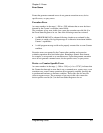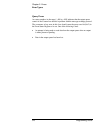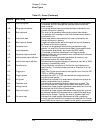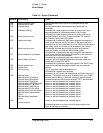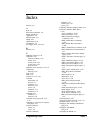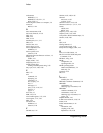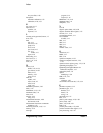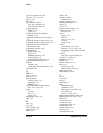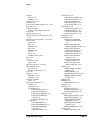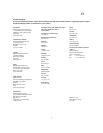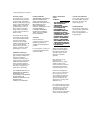
Index
Programming Guide Index-3
low-pass filter, 4-48
interpolator
automatic calibration, 4-32
calibration, 4-26, 4-33
K
key queue, 4-117
keyword, 3-9
optional, 3-9
separator, 3-9
L
Learning to Program the Counter, 1-7
level, 4-83
limit
fail, 4-14
fail count, 4-15
graph, 4-14
lower, 4-16
pass count, 4-17
test, 4-11
enable, 4-17
upper, 4-18
limit testing, 4-11
list of errors, 5-7
literal, 3-11, 3-18
local, 3-6
M
macros, 3-52
define, 3-52, 4-125
get contents, 4-129
labels, 4-131
memory, 4-79
purge, 4-135
math, 4-7
enable, 4-10
offest, scale, 4-7
offset, 4-10
scale, 4-10
math/limit operations, 3-49
MAV, 3-22
MAXimum, 3-12, 4-19
maximum value, 3-11
mean, 4-19
measure, 4-52
using, 4-75
measurement functions, 4-89
See function, 4-60
measurement instructions commands
definition, 4-52
measuring status bit, 3-30, 3-31
memory, 4-79
messages
program, 3-14
response, 3-16
MINimum, 3-12, 4-19
minimum value, 3-11
multipliers, 3-13
N
N, 4-20
negative pulse width, 4-67, 4-89
negative transition filter register, 3-27
new line, 3-11, 3-18
non-decimal numeric, 3-11
Not a Number
9.91E37, 3-17
NR1, 3-17
NR2, 3-17
NR3, 3-17
NRf, 3-11
numeric value, 3-12
O
offset/scale, 4-7
OHM, 3-12
OPC, 3-24
operation complete, 4-132
operation complete status bit, 3-24,
3-25
operation status register group, 3-27, 3-30
optimizing throughput, 3-35
Optimizing Throughput Results for
Different Computers, 3-37
optional keyword, 3-9
options
identifying, 4-134
OSB, 3-22, 3-23
oscillator
reference, 4-92
out of limit event status bit, 3-32, 3-34
P
parameter separator, 3-12
parameter types, 3-11
Boolean, 3-11
literal, 3-11
string, 3-11
pass limit test, 4-17
PCT, 3-12
peak-to-peak voltage, 4-70, 4-89
period, 4-68, 4-89
phase, 4-70, 4-89, 4-91
PON, 3-24
positive pulse width, 4-70, 4-89
positive transition filter register, 3-27
post-processing, 4-9, 4-19



